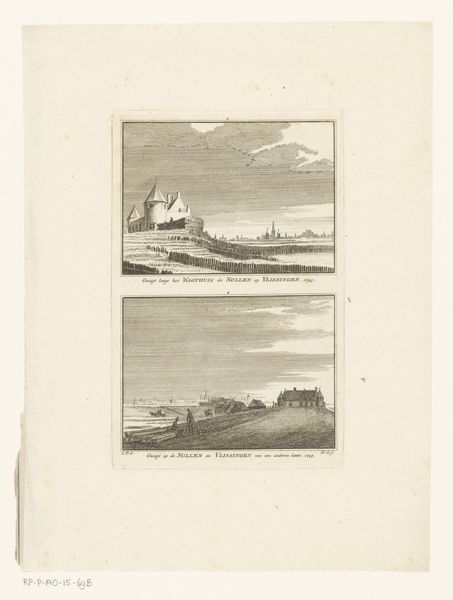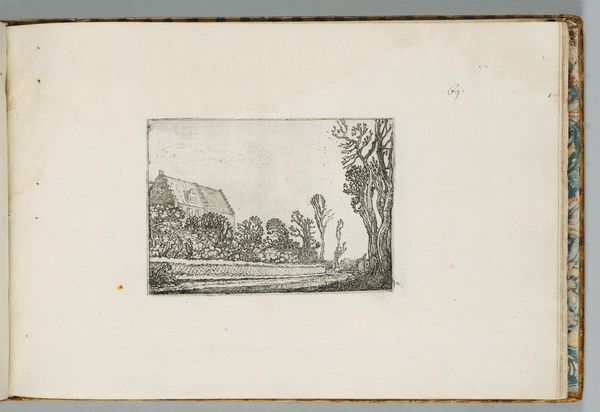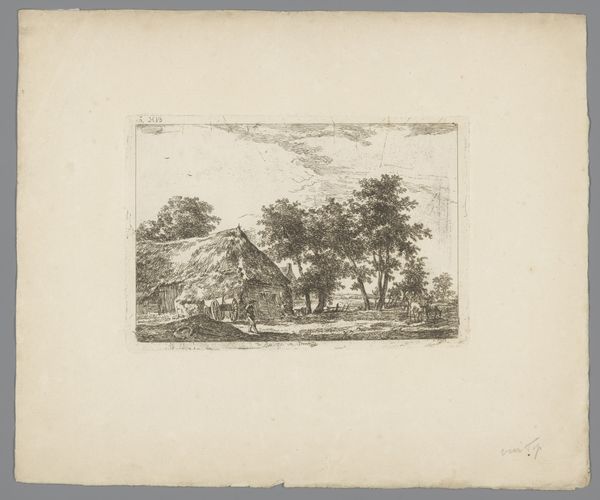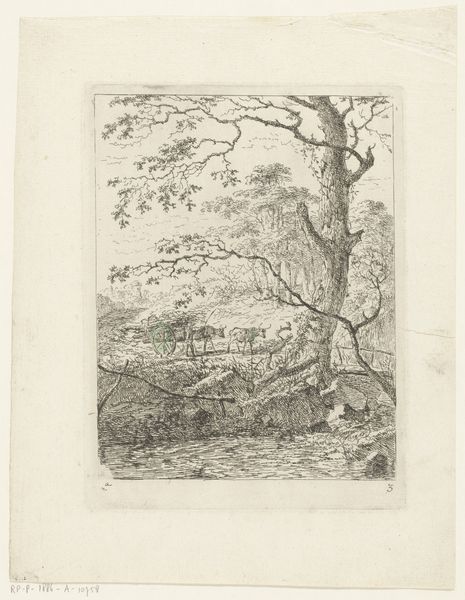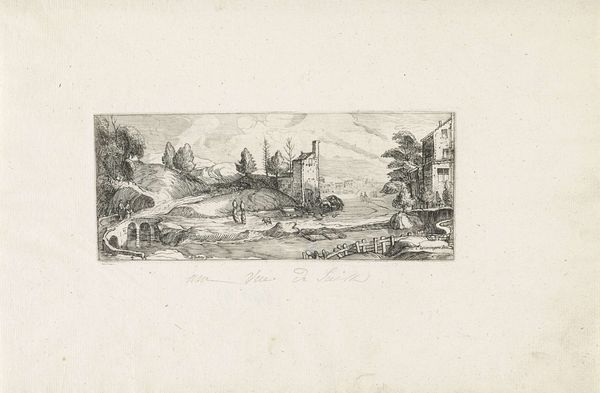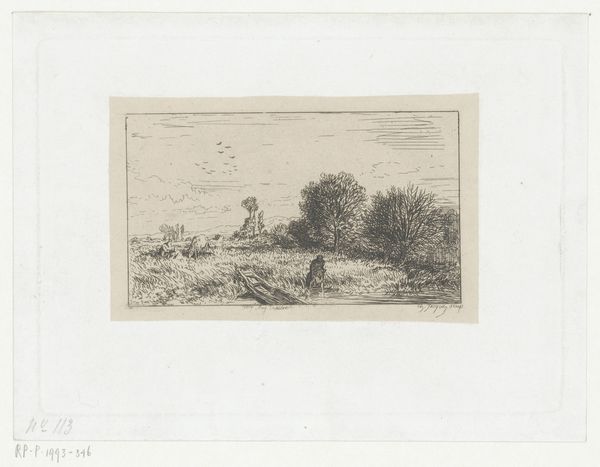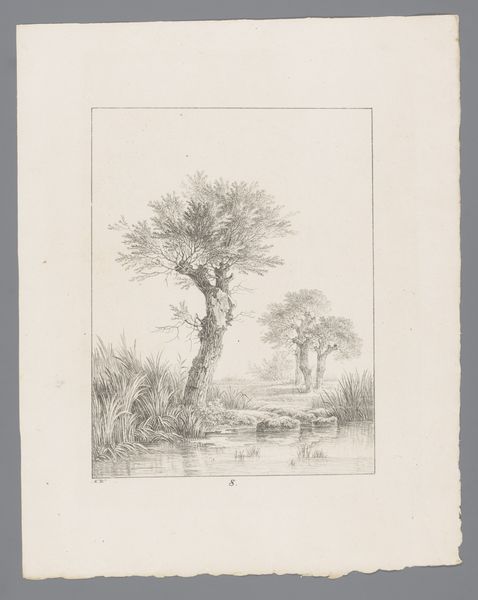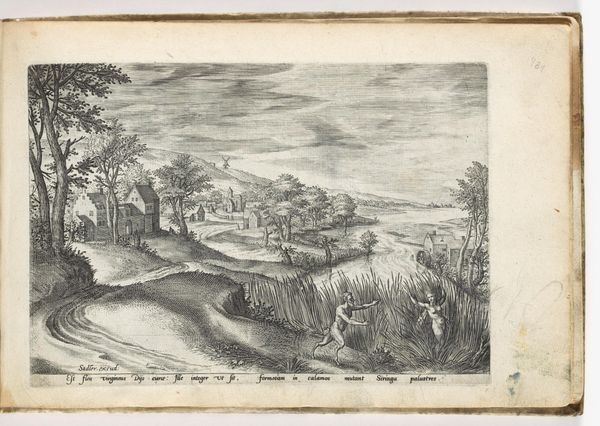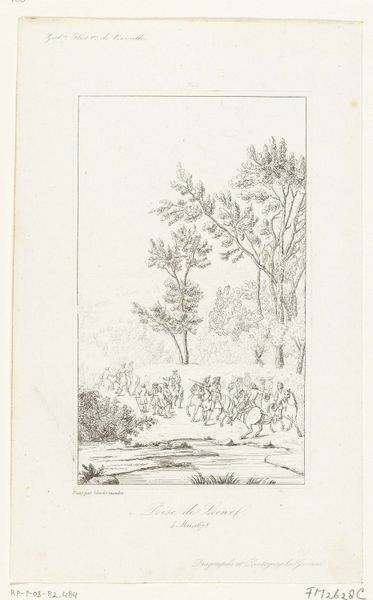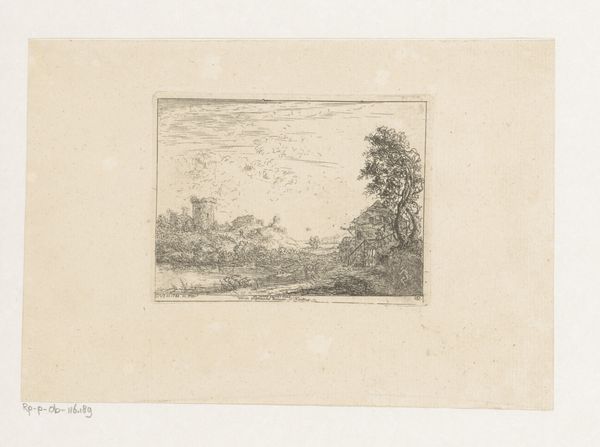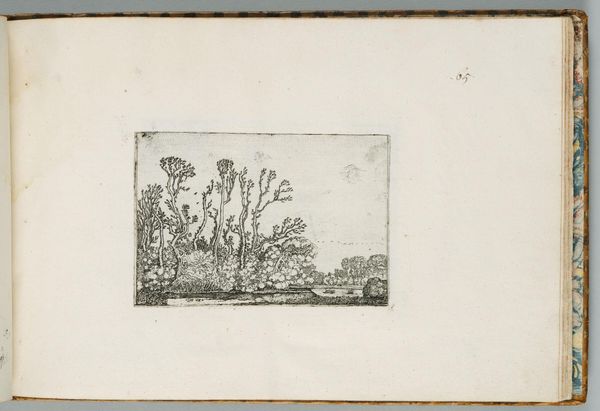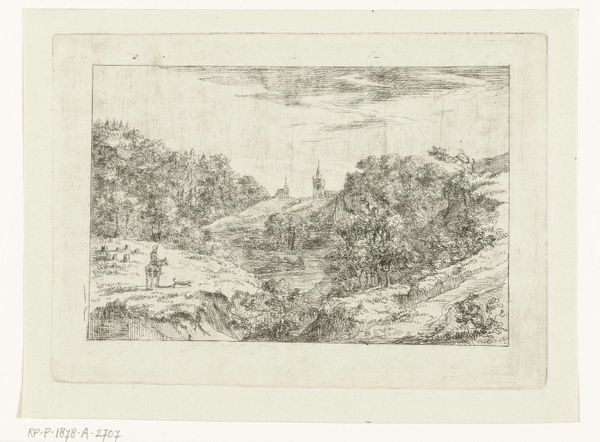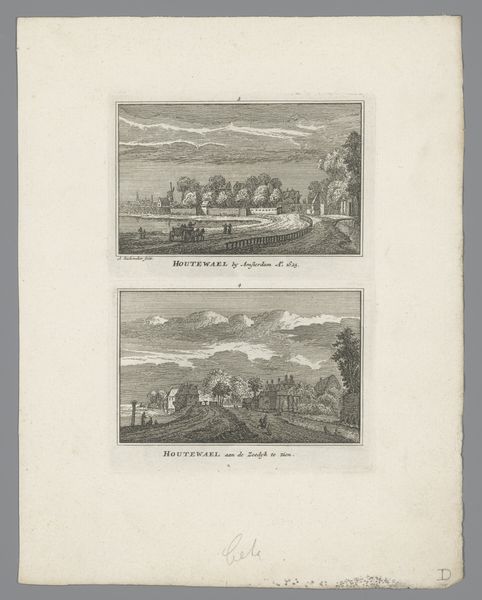
drawing, print, etching
#
drawing
# print
#
etching
#
landscape
#
etching
#
genre-painting
Dimensions: height 141 mm, width 186 mm, height 56 mm, width 188 mm, height 376 mm, width 249 mm
Copyright: Rijks Museum: Open Domain
Curator: My first impression is this piece feels so…fragile, almost like a whisper of a forgotten practice. Editor: Indeed. What we’re looking at is “Verschillende Vogelvallen,” or "Different Bird Traps," an etching by Bernard Picart, created around 1730. It offers a fascinating glimpse into the methods of bird catching popular in the 18th century. Curator: Bird catching... It does have an airy quality, the way the scenes are sketched in so lightly, but that contrasts sharply with the implied violence of trapping. There’s almost a tension between delicacy and… well, potential avian doom. Editor: Exactly! Picart’s etching depicts these traps with an almost scientific precision. But thinking about the wider context—the environmental impact, the human control over nature—suddenly those elegant lines carry a heavy weight. How complicit are we in admiring the skill while overlooking the suffering? Curator: A very good point. And look at the layouts. One shows a sort of pull-string mechanism leading to cages, and the other seems like a linear series of perches...Almost feels like a diorama, with this sense of human ingenuity aimed at disrupting the natural world. Did people think much about ecological damage back then, or were birds just another resource? Editor: Well, the idea of "ecological damage" as we understand it didn’t exist in the same way. But anxieties about dwindling resources, and who had access to them, were definitely present. Bird catching was both a pastime for the wealthy and a means of sustenance for others. This makes me wonder about who had access to the knowledge displayed in this etching and who was denied that access. Curator: Fascinating! It’s amazing how a simple scene, almost bucolic at first glance, reveals layers of meaning and invites us to question the choices and values of a different era. Editor: Precisely. Art serves as this powerful lens to examine not just the past but our present relationship with the world, right? I'm leaving this work thinking about modern-day practices of control and their ethical implications.
Comments
No comments
Be the first to comment and join the conversation on the ultimate creative platform.
